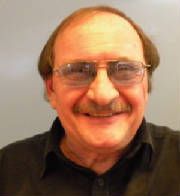|
|
The RespireAide Story
To my fellow sufferers of OSA(Obstructive Sleep Apnea) and heavy snoring: My name is Harry Cutler,
and I am the inventor and manufacturer of the RespireAide Sleep Solution. I am not a physician, but I do suffer
from severe Obstructive Sleep Apnea (OSA) and heavy snoring, which most often accompanies and is a primary indicator of OSA. My original intention was not to create a medical device to sell to other people, but rather, to address
my own OSA that had increased in severity as I grew older. About 6 years ago, my condition became so acute that I was falling
asleep any time that I sat in one place for more than five minutes, including when I was driving. After I had crossed over
the oncoming lane of traffic and hit the opposite curb 4 or 5 times (luckily this happened on side streets when there was
no oncoming traffic), I decided that I needed to define and address my problem before I had a serious accident. I researched
my symptoms online: I snored so loudly that everyone in the house lost sleep...except when I stopped breathing entirely, then
I kicked my legs as I struggled for breath and awoke gasping for air. I then immediately fell back asleep only for the process
to start again. I was tired from the time I woke up in the morning. It didn’t take me long to determine that these symptoms
were indicative of Obstructive Sleep Apnea. I learned that OSA occurred when the soft palate, the tissue immediately
behind the hard palate or roof of the mouth, draped down and closed against the back of the tongue and blocked the airway.
This happens to individuals who have an enlarged soft palate or a narrow airway. When they fall asleep and the muscles controlling
the soft palate relax, breathing is interrupted. For about ten seconds, the brain recognizes the lack of oxygen and wakes
the individual up so that he or she will take a breath, then fall asleep again. This cycle can occur hundreds
of times each night and has dire health consequences including: heart attack, stroke, impotence, irregular heartbeat, high
blood pressure and heart disease, and of course, auto accidents and other accidents related to drowsiness. Next I researched the alternative methods of treatment. The most effective remedy was the Continuous Positive Airway
Pressure (CPAP) machines. I did not think I could handle wearing a mask and being tethered to an air pump all night, and being
without insurance, I couldn’t afford the necessary costs involved in purchasing the equipment and having it fit and
adjusted by a physician. The only other effective option for one with my level of severity was a Mandibular Advancement Device,
which required custom fitting and lab costs to create hard acrylic forms that fit over the upper and lower teeth and used
springs or a screw mechanism to force the lower jaw, and the back of the tongue, into a more forward position. This is intended
to increase the distance between the soft palate and the back of the tongue and reduce the possibility of closure. Once again,
I did not believe I would be comfortable trying to sleep using such a contraption in my mouth, and I couldn’t afford
it at that time, anyway. I decided to create my own device to address the root causes in a more direct, and more comfortable,
manner. My approach was to create a device that would be held in place by the lips and teeth and
extend back to support the soft palate to keep it from draping down into the airway. The initial creation included a mouthpiece
from a snorkel, a length of vinyl tubing for a breathing tube and palate lifter, some elastic for a headband, and some snaps
and screws to hold it all together. After numerous adjustments and modifications, the resultant device worked relatively well.
I only snored lightly and noticed that I was less tired and more energetic during the day. I continued to research sleep apnea
and eventually decided that to improve the effectiveness, I needed to control rearward movement of the tongue. After some experimentation, I decided to do away with
the vinyl tube and replaced it with two separate components; one to lift the soft palate and another, a tongue retainer, to
inhibit the tongue from moving backwards from its natural position when a person is awake. After a number of prototypes were
tried, adjusted, and improved, the current configuration was born. I also researched and tested materials I could use for
components to find those that worked the best and had been tested and proven safe for use inside the oral cavity. This was
essential for ultimate approval by the FDA. Recently, I underwent testing by an accredited sleep laboratory. Without
using RespireAide, I experienced 54 apnea events per hour, nearly one every minute; this is considered severe. These apnea
events caused the concentration of oxygen in my blood to fall approximately 30% from acceptable levels while I was sleeping.
While wearing the device, my apneas were reduced to an average of 3 per hour (considered “normal”) while
sleeping in my usual side-sleep position. Although apnea events increased while sleeping on my back (devices tend to lose
effectiveness in this position) my overall average was still only 9 per hour, which is considered “light” and
represents an 84% overall decrease in OSA. My blood/oxygen saturation, averaged 95%, which is the same as when I am awake.
I encourage you to contact me with any questions or comments that you may have. My hope in making RespireAide fully adjustable and universal is to offer those who suffer from OSA/heavy snoring and have had difficulty acclimating themselves to other treatments an effective, comfortable, and affordable alternative. I am sure that with a bit of effort and tenacity, it will work as well for you! |
